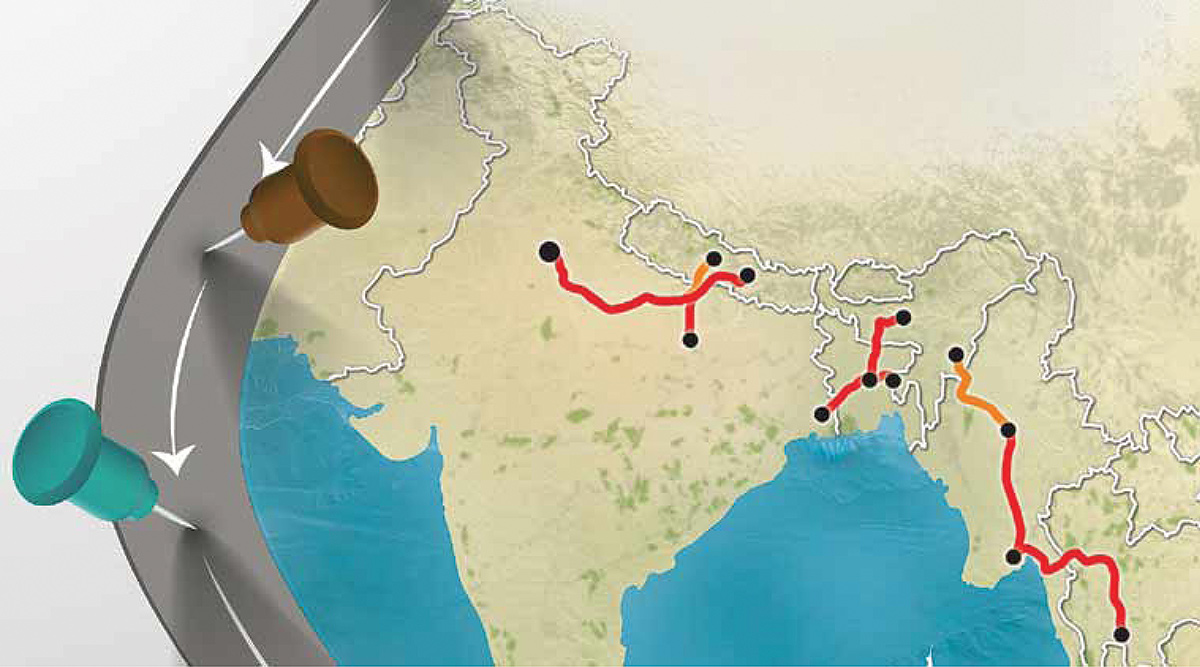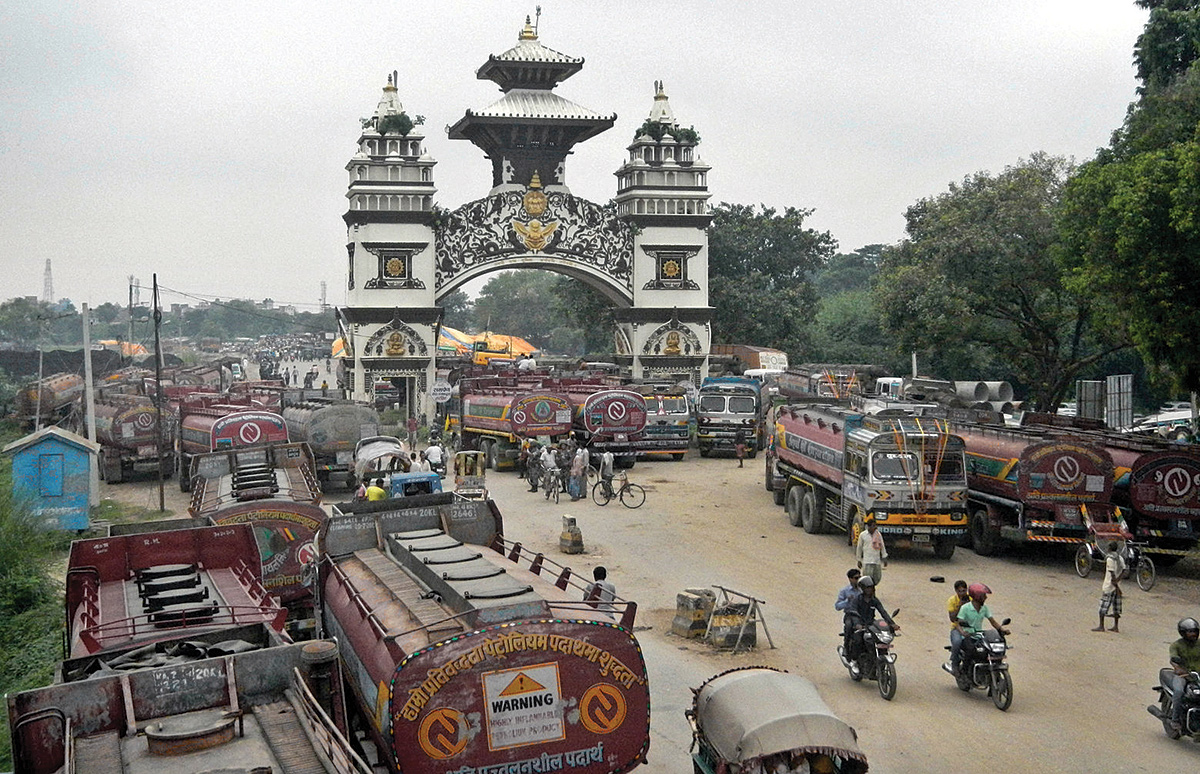
Location of Nepal on the southern slope of Himalayas, embedded with a large mass of rugged terrain and hills poses daunting challenges in the development of transport and communication linkages. However, there are opportunities to harness the economic benefits from mountains, hills and plains. The mountain and hills can accommodate a number of agricultural activities like cultivation of fruits, vegetables, medicinal herbs, livestock and poultry farming, among others. The mid-hills also possess immense potential of generating energy from the major and minor river systems that run through high gradient surfaces all the way from the Himalayas to the plains. Tourism, health and education can become other potential services sectors that are supported by the mild and temperate climate found in the mountains. However, this depends on the necessary infrastructures to support the supply and qualities of these services. The narrow strip of Terai not only serve as the granary of Nepal but also as a large tract of lush green forest. This home to key tourism destination like Janakpurdham and Lumbini, and almost 70 percent of manufacturing industries of the country. The ecological belts extending from 150 metres to 8848 metres above sea level provides unique opportunity for Nepal to diversify the base of economy and enhance complementarity between various geographical regions. A complete structure of federalized Nepal hinges on the north-south axis, complementing three distinct geographical divisions to each other.
Distance away from the sea and global markets are considered as factors behind the poor diversification of Nepalese trade and investment regimes. For obvious reason, Nepal’s trade is traditionally limited to India and the Tibet, Autonomous Region of China only. Exports from Nepal mostly comprise of agricultural products like cardamom, ginger, honey, cereals and forest products including medicinal herbs, handicrafts and woollen carpets. Imports comprise of manufactured articles, salt, kerosene, cigarettes and other consumer goods. Before 1950, Nepal was incurring trade surplus with both neighbours, even in barter trade with Tibet.
Countries are on the spree of increasing market access opportunities for their products and services within the framework of a new global economic order that started in the aftermath of World War II. The notion that free trade enhances overall economic gain through efficient allocation of resources is being accepted by all countries, irrespective of their political system, whether it is a socialist country or capitalist with parliamentary democracy. Despite the different political systems, our neighbouring countries China and India are now emerging as global leaders, enhancing the economic output at an impressive rate after joining the multilateral trading system.
Facilitating the cross-border flow of trade by minimising the tariff and non-tariff barriers, investment promotion, and cross-border flow of factors of production including facilitation of the movement of people has brought tremendous changes in the production structures of the economies. Now countries, more than ever, trade across industries; a sort of horizontal and vertical integration and fragmentation of production supported by the notion of free trade. However, the process has faced bumpy road with a sceptic view in some Western countries as evidenced by the decision of British people to remain out of European Union and the emergence of Donald Trump as the President of USA with his rhetoric campaign of anti-free trade and protecting American jobs. Now, USA under the new administration has repealed itself from the much touted Trans-Pacific Partnership Agreement and is in the process of reviewing the North American Free trade Agreement (NAFTA).
The conflicting moves in the global economic arena have left land-locked and least developed countries in an insipid condition. At a time when countries are surging ahead to forge better connectivity both in hard and soft infrastructures and creating inter-dependency between developed, developing and least-developed countries, the backtracking of trade liberalization process would mostly hurt the poor and disadvantaged countries. It is also equally true that creating a cocoon of trade, investment and transport within the national boundary may kill the spirit of promoting universal welfare and harnessing best potentials of countries irrespective of their level of development.
Geography of Nepal, now more than ever, possesses more opportunities than challenges if the right approach could be followed for enhancing economic cooperation with neighbours in south and north. The big markets in India and China, which are being eyed by major developing countries is within reach of four hours flying and one to four days driving distance. With the introduction of modern transport fleets, the time period to reach out to these markets would be further reduced. During ancient and medieval times of Nepalese history, Nepal used to be the transit for pilgrimage and trade between India and TAR China. The revival of the trade and travel route is another prospect that can put Nepal as transit hub for overland trade between its two big neighbours. The potentialities of enhancing connectivity to the north and southern borders is increasing since some of the important projects linking Nepalese cities and borders with transport systems of the neighbouring countries is increasing. The initiation of belt and road initiatives by China has added a new dimension in development of trade and economic infrastructure in neighbouring countries. Extension of electrical traction railway lines from Shigatse to Rasuwa-Keyorong border in the north and highways and railway network of India to link major border cities like Biratnagar, Bhairahawa, Nepalgunj and Kakarbhitta is on the pipeline. The city of Birgunj is already connected to the Indian railway system through the dry port of Sirsiya.
The contiguous location of settlements and the people to people relations with similarity in language, culture and way of living has made it easier for the people in the northern and southern border to engage in economic activities across borders. Such people to people relations can be better strengthened with the right approach and pursuit of economic diplomacy at the governmental level. Nepal’s economic development could be enhanced by establishing complementarity in investment, trade, tourism and services with both neighbours. This requires diplomatic acumen to deal with the neighbours without hurting the interest of each other. Gone are the days of playing one card over the other. Both neighbours are important for Nepal. Maintaining good bilateral relation with both countries would form a strategic bedrock in placing Nepal as the transit hub between South Asia and China.
 Purushottam Ojha is a former Commerce Secretary. He is now consultant at the World Bank.
Purushottam Ojha is a former Commerce Secretary. He is now consultant at the World Bank.
Published Date: April 30, 2017, 12:00 am
Post Comment
E-Magazine
RELATED Economy





